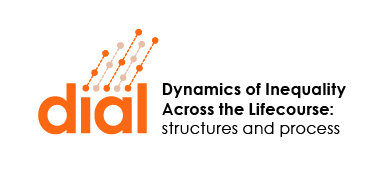A new paper by Hogendoorn, Leopold and Bol, Divorce and the Growth of Poverty Gaps Over the Life Course: A Risk and Vulnerability Approach, published in the DIAL working paper series, examines educational gradients in the relationship between divorce and poverty. The authors take a new approach to studying growing poverty gaps between education groups by combining theoretical aspects of gradients in the probability of divorce (risk) and gradients in how divorce influences poverty (vulnerability). Previous studies have demonstrated that the lower educated have both a higher risk of divorce, and have suggested they also have a higher probability to suffer from the negative consequences of divorce. However, by studying risk and vulnerability separately, previous research has not fully assessed their joint contributions to poverty.
Hogendoorn and colleagues study the educational gradients in divorce and poverty using longitudinal administrative data from the Netherlands. They confirm that the lower educated indeed have the highest risk of divorce and the highest probability to fall into poverty after divorce. These gradients also strengthen over the life course, which means that the contributions of divorce to poverty among lower educated men and women increase as they age. However, the contributions of divorce to poverty differ by gender and parenthood, for example mothers seem to be particularly likely to fall into poverty after divorce than any other group.
One of the main contributions of the paper is the two-fold approach of risk and vulnerability of divorce and how they have contributed to the increased poverty gaps between education groups. Hogendoorn and colleagues illustrate that especially among mothers, both risk and vulnerability of divorce contribute significantly to the educational gradient in poverty. The phenomenon is less substantial among childless individuals and absent among fathers.
